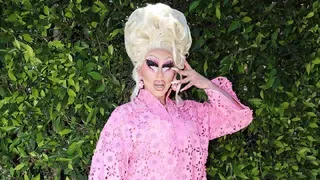May 24, 2008
Asians Turn to Cosmetics for Lighter Skin Color
Katherine Dean READ TIME: 3 MIN.
Swayed by advertising, TV soaps and blockbuster movies featuring glamorous models, Asians are spending a huge amount in a rapidly expanding skin-whitening market. The number of such products introduced across the region skyrocketed to 226 in 2006, after averaging about 50 annually since 2002, according to a market research.
The preference for lighter skin is nothing new, said Thai dermatologist Dr. Chitralada Vibhagool, but it has been boosted by media campaigns tapping the expanding middle-class and women's growing incomes. "Traditionally, people with darker skin were the ones who worked outside in the sun," she said in an interview. "Today, lighter skin is connected to higher social status and wealth. Now-a-days, people have more money to spend on cosmetics."
A survey by Synovate, another research firm, found that skin whitening products were used by 58 per cent of Thai women between the age group of 18 and 64 with a monthly household income of at least 20,000 baht (US $665).
Respondents spent 1,950 baht (US $65) monthly on skin care, roughly 10 per cent of their income, according to an unpublished survey. The same survey found that half of Filipino women, 45 per cent of Hong Kong women and 41 per cent of Malaysian women use a skin-whitening product. India is another growing market.
Men too have caught the whitening fever. Supermarkets and pharmacies boast rows of whitening aftershaves, creams, cleansers, moisturizers and even wipes, designed for men. After discovering that Indian men were snapping up women's whitening products, Beiersdorf released a 'Nivea For Men' whitening line last year.
Unilever has launched three men's lines with whiteners. The Anglo-Dutch company says the 'lightening' sector has grown 12 per cent annually for the past three years in Asia.
"According to our research, 87 per cent of Thai women want to have lighter skin," Unilever spokeswoman Aranya Luepradid said. "In Asia, lighter skin equates with beauty and well-being. Lightening products are developed in response to these consumer needs."
A 35-year-old senior executive at a major Thai company applies six beauty aids every morning to her near-perfect complexion. Three of them contain whiteners. She said she won't give them up despite warnings that long-term use of some whitening agents can discolour skin and actually darken sun and age spots.
"If I believe that something will help me look better, then I have no hesitation to buy it," said Thai fashion designer Chanala Chongsathit, 45.
Pom, as she is known, spends about 100,000 baht (US $3,300) annually on beauty aids, including a 2,400-baht (US $80) whitening mask to counter the effects of years of playing golf and tennis. Not everyone can afford the brand-name whiteners, and some resort to unsafe substitutes.
Thailand's Food and Drug Administration says nearly 100 illegal whitening products are sold around the country. In Indonesia, officials have identified more than 50 banned cosmetics. Banned substances include hydroquinone, retinoic acid and mercury, which are among the cheapest whitening agents. Any cosmetic containing these substances is confiscated and destroyed, said Wattana Akraekthalin, the director of cosmetic and hazardous substance control at the Thai FDA. "The manufacturers of these illegal products are simply changing the names and the packaging, but the ingredients are still the same," she added.
However, an anti-whitening backlash may be gaining ground. In an article last year in a weekend magazine, Thai journalist Nikki Assavathorn bemoaned her compatriots' 'skin racism'.
She accused the media and beauty product companies of brainwashing consumers and imposing the white beauty ideal 'to
keep the profits pouring in'. "Since when did we become so preoccupied with fair skin, isn't it unnecessary and demeaning? Are we so self-loathing that we believe we will be deemed more attractive if we have a lighter shade of skin?" she asked
Katherine Dean is first and foremost your favorite EDGE contributor and Assistant Editor in Grooming, but by day she is a Spanish Interpreter for the schools. She lives with one roommate (Sarah) and one demonic feline (O'Malley). She hopes one day to find fashionable shoes that are comfortable, a pony to ride to work and a cabana boy named Raul to do her biding.







